Arabesque design originates from the Islamic world, particularly from the Middle Eastern and North African regions. Its development was significantly influenced by the cultural and artistic traditions of these areas.
Arabesque design is closely linked to Islamic art, which emerged around the 7th century and reached its zenith between the 9th and 16th centuries. This style is distinguished by its avoidance of depicting living forms, adhering to the Islamic principle of aniconism, which discourages the representation of sentient beings. Instead, it focuses on geometric patterns, calligraphy, and floral motifs, creating a visual language that is both symbolic and decorative.
It is a timeless and exquisite art form in interior design.
This blog goes into the heart of Arabesque design, looking at its key aspects, applications in modern interior design, and ongoing appeal in contemporary homes.
1- Defining Characteristics of Arabesque Style
Geometric Patterns: The cornerstone of Arabesque design is based in its use of intricate geometric shapes. These patterns are often complex, featuring interlaced lines that form stars, polygons, and intricate latticework. The geometry is also laden with symbolism and mathematical precision, reflecting the Islamic emphasis on knowledge and the harmony of the universe.
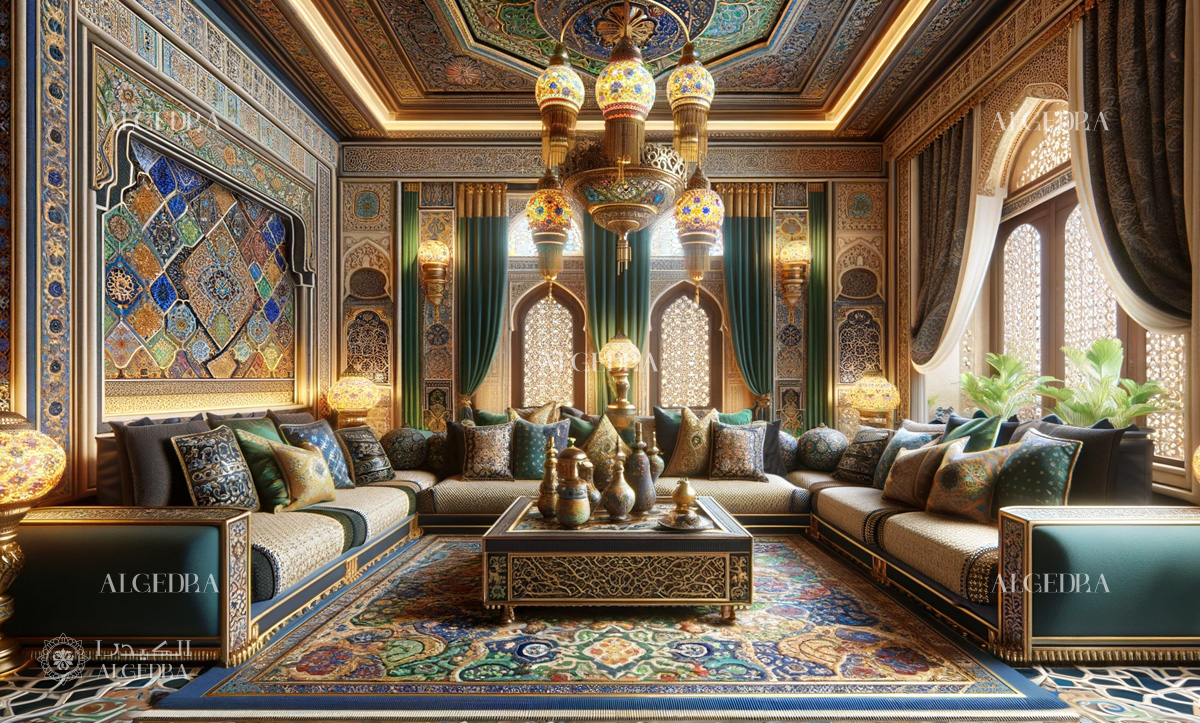
Color Palette: Arabesque design is known for its rich and vibrant color scheme. Deep blues, vivid reds, emerald greens, and luxurious gold and silver hues dominate, creating a warm and inviting atmosphere. These colors are often used in tiles, textiles, and wall paints, contributing to the overall opulence of the style.
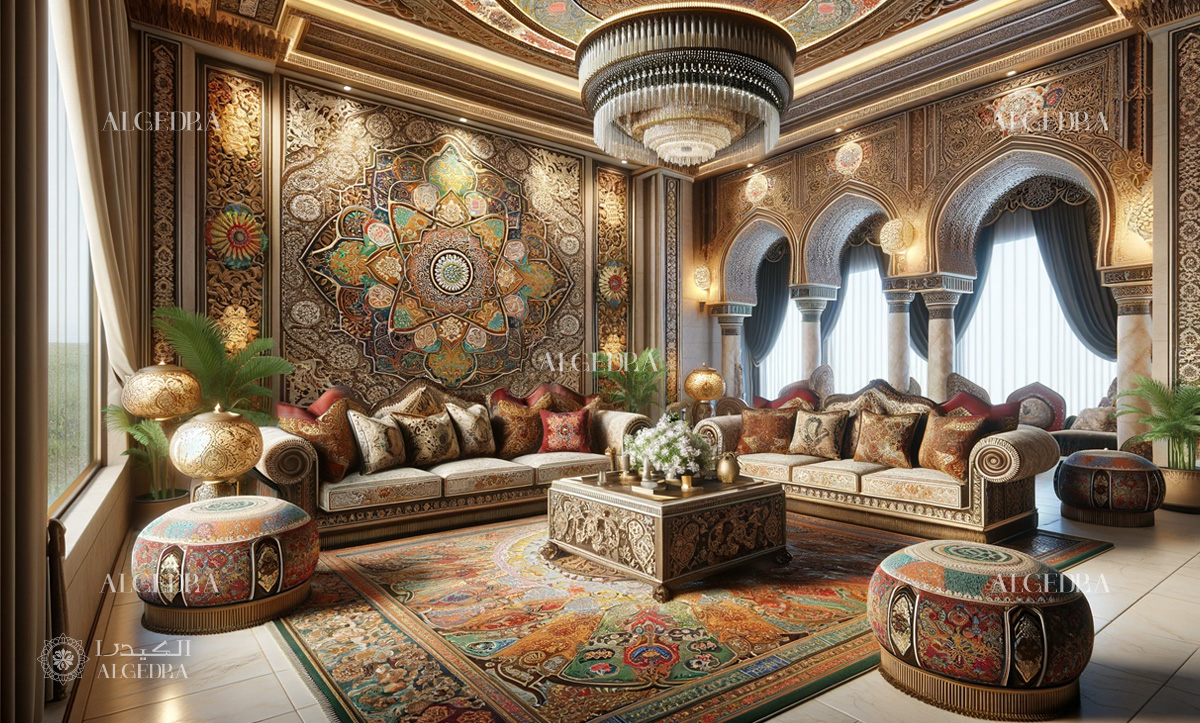
Ornamental Detailing: Detailing is paramount in Arabesque design. This includes intricate tile mosaics, carved woodwork, stucco, and metalwork. The craftsmanship is meticulous, with a high level of attention paid to the intricacy of the designs.
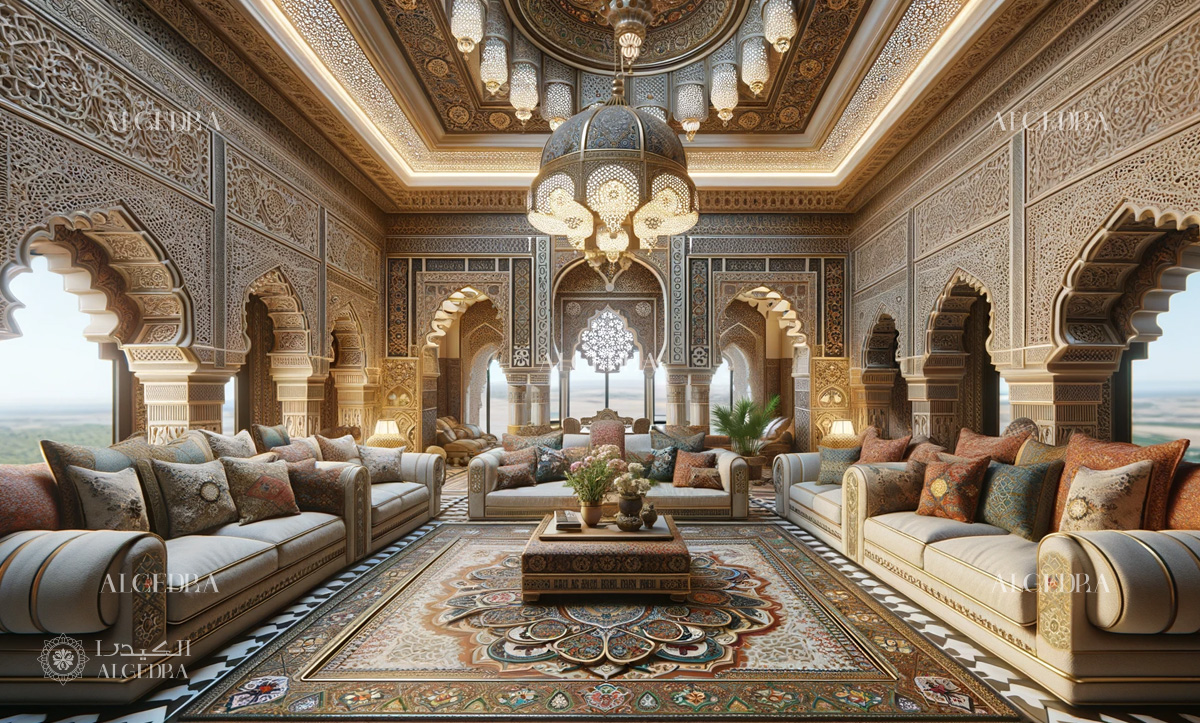
Textiles: Luxurious fabrics are a staple in Arabesque interiors. Materials like silk, velvet, and brocade, often embellished with embroidery or patterns, are used in curtains, upholstery, and cushions. These textiles add a layer of richness and comfort to the space.
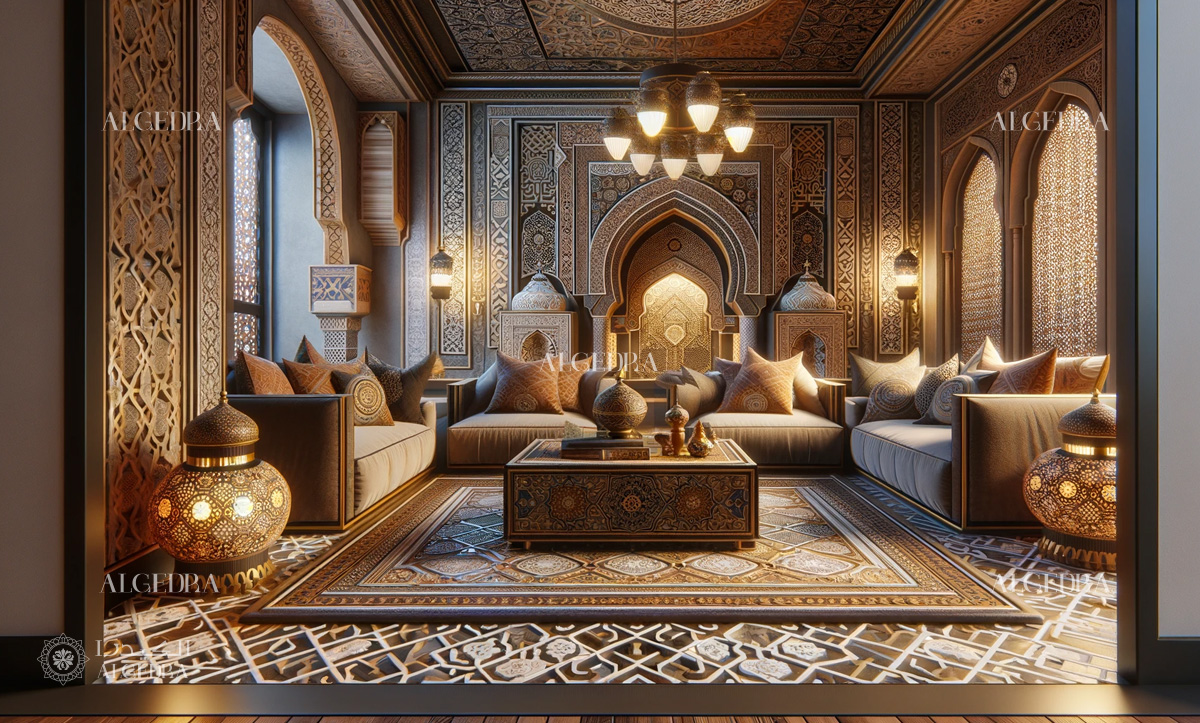
Metal and Woodwork: Arabesque design frequently features metal and wood elements. Brass, copper, and silver are often used in decorative items like lanterns, trays, and mirrors. Wood is usually intricately carved and inlaid, often seen in furniture, doors, and screens.
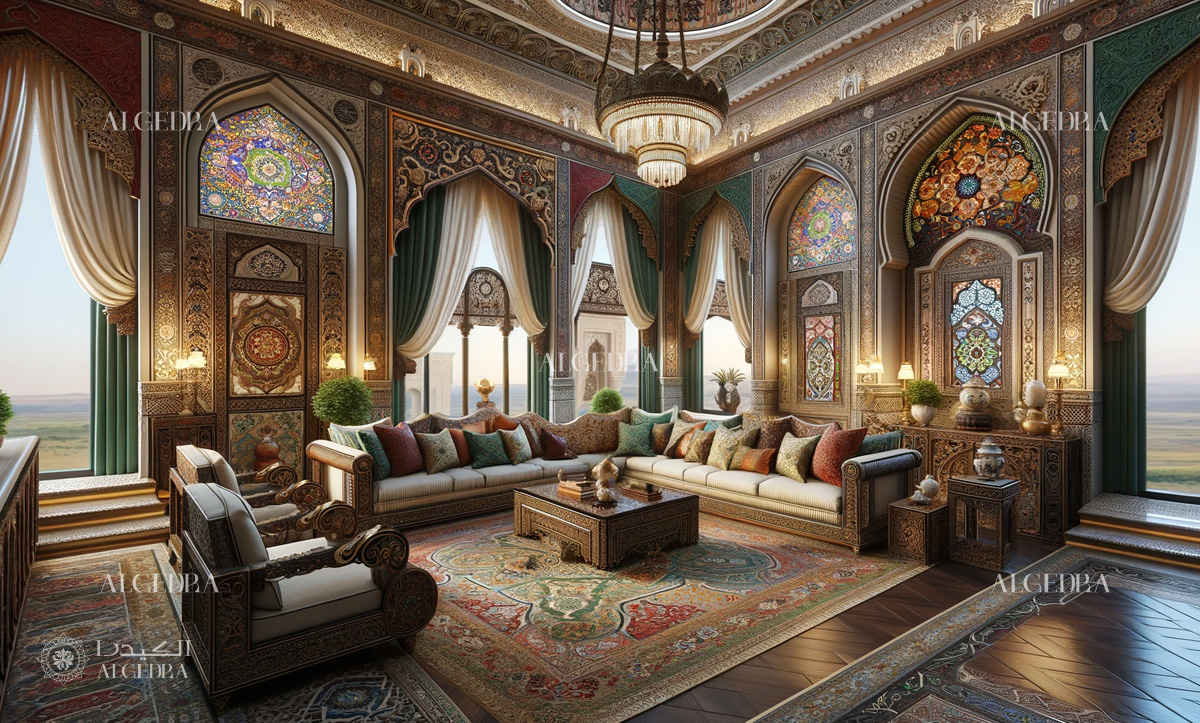
2- Application in Modern Interior Design
Modern Arabesque design involves a harmonious blend of traditional elements with contemporary aesthetics. This blend allows for a versatile approach to decorating, making Arabesque style accessible and adaptable to various modern settings.
Feature Walls: A popular way to incorporate Arabesque style into modern homes is through feature walls. This can be achieved with Arabesque-patterned wallpapers, mosaic tiles, or stenciled wall art. Such a feature wall becomes the focal point of a room, adding depth and character.

Furniture and Decor: Modern interpretations of Arabesque design can be found in furniture and home decor items. This includes sofas with geometric-patterned upholstery, coffee tables with intricate inlay work, and decorative lanterns and vases with Arabesque motifs.
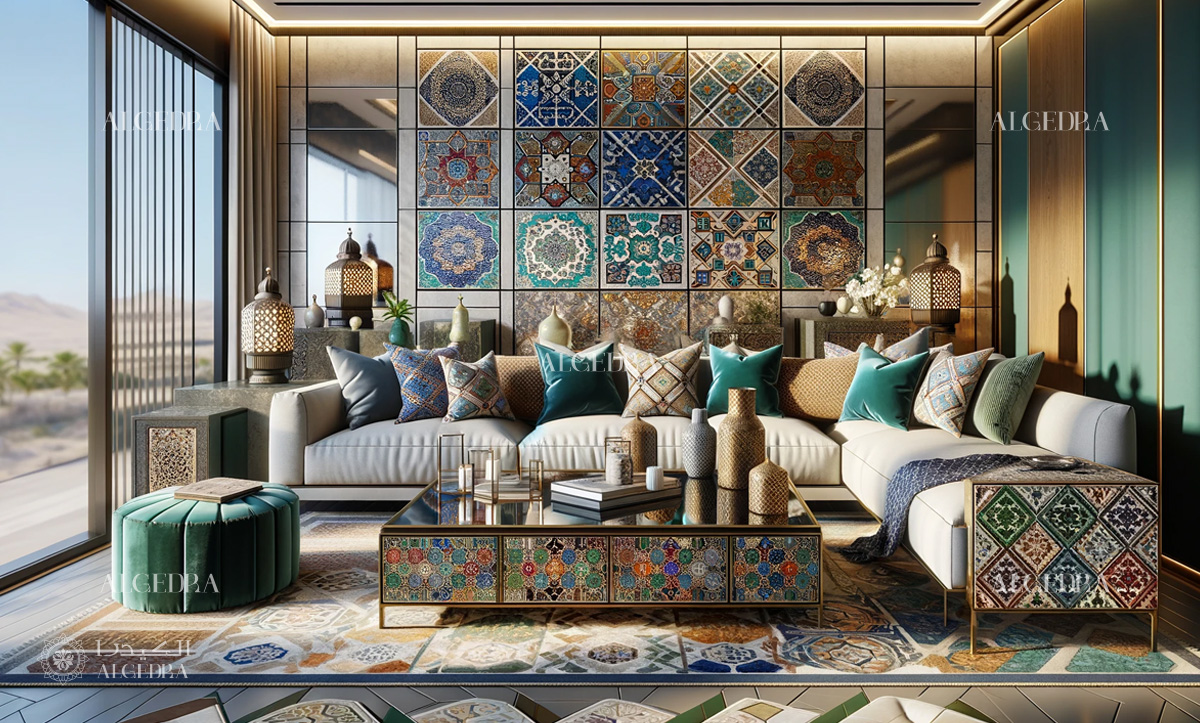
Textural Elements: Mixing different textures is a key aspect of Arabesque interior design. Combining smooth silks and velvets with rougher materials like wood and metal creates a dynamic and inviting interior.

Lighting: Lighting plays a crucial role in Arabesque interiors. Ornate chandeliers, lanterns with patterned metalwork, and lamps with colored glass can cast beautiful shadows and patterns, enhancing the mystical feel of the space.
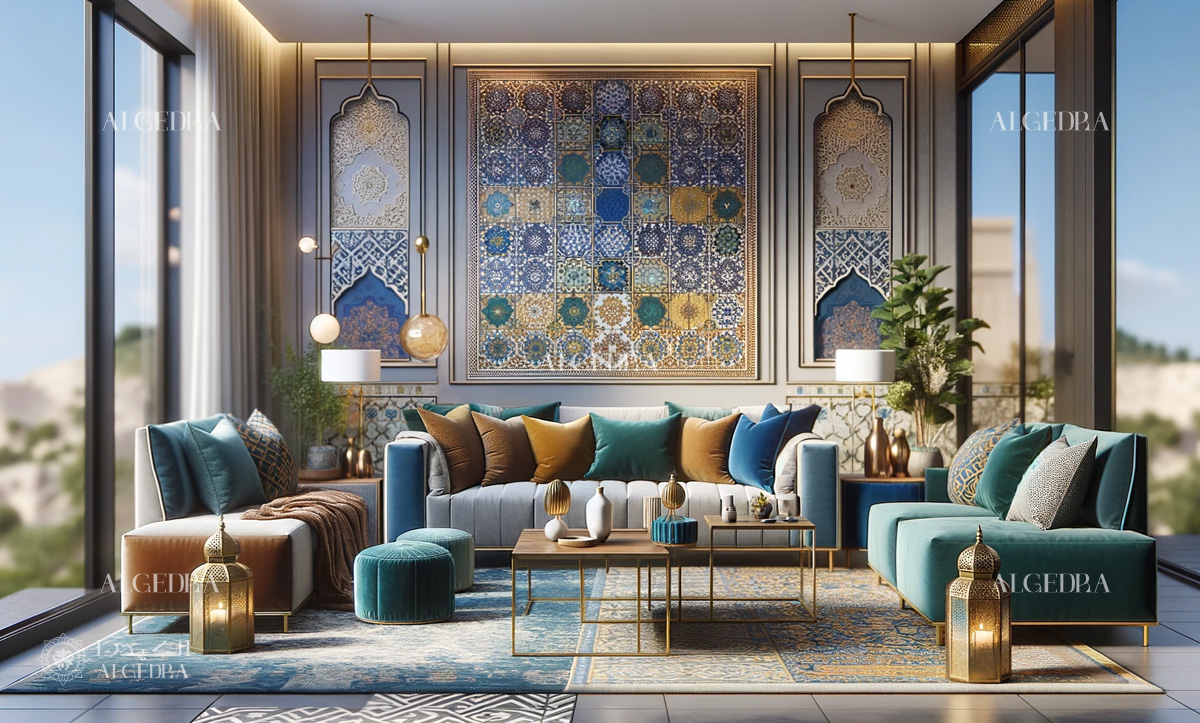
3- Contemporary Application of Arabesque Design
The integration of Arabesque style in modern interiors involves a balanced approach. It includes the use of Arabesque patterns in feature walls, decorative accents with traditional elements, and a harmonious blend with contemporary furniture. This approach ensures a modern interpretation while preserving the style's traditional essence.
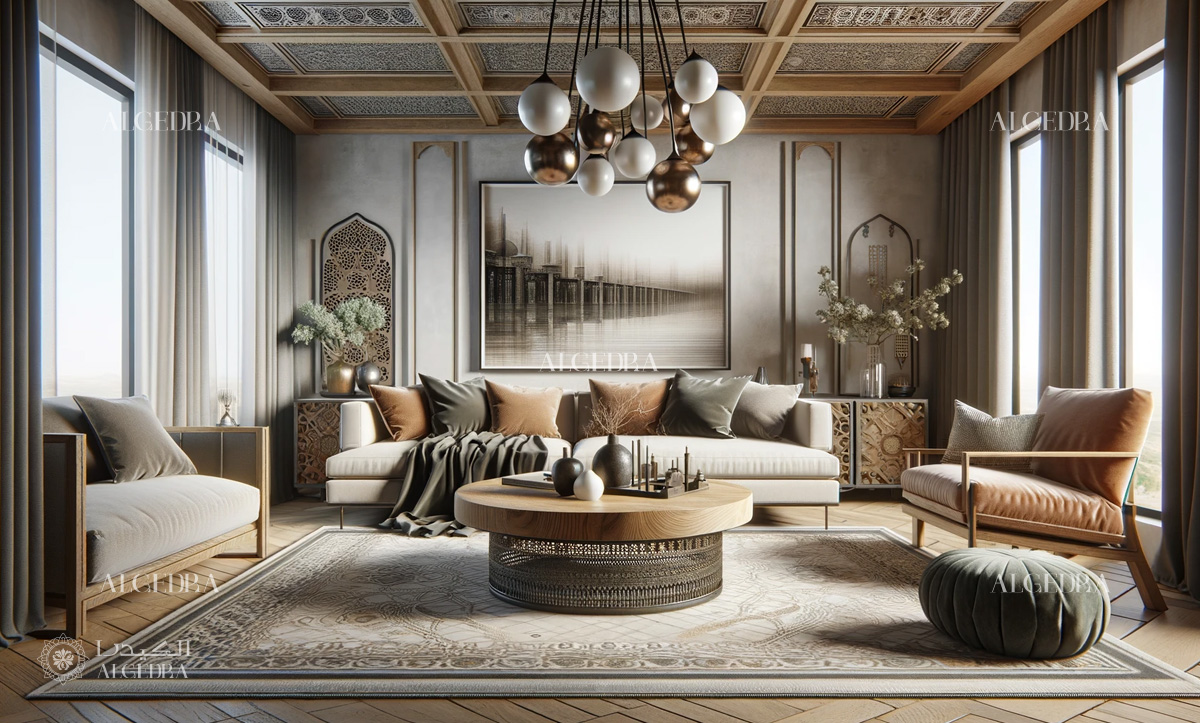
4- Cultural and Aesthetic Appeal
The appeal of Arabesque design has its cultural depth. This style is a representation of a rich historical perspective and artistic achievements of Islamic civilizations. In contemporary homes, Arabesque design offers a connection to this heritage, bringing a sense of timelessness and exotic elegance.
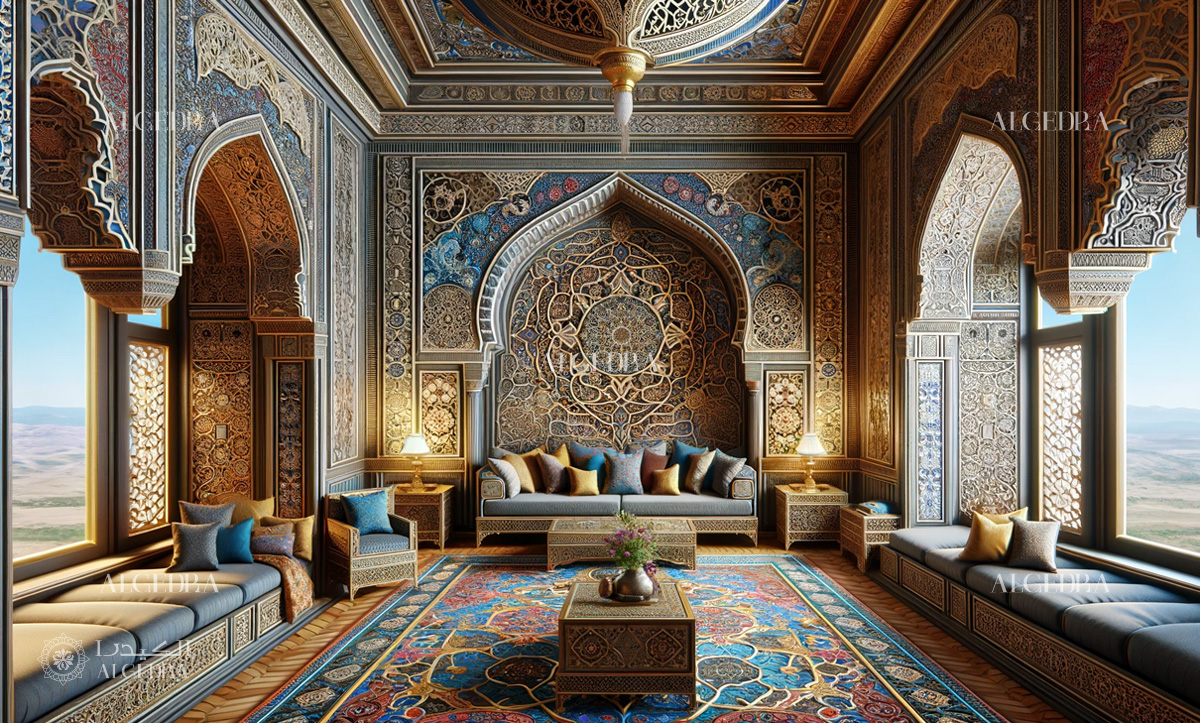
To sum up:
Arabesque interior design provides a distinct blend of beauty, history, and culture. Its elaborate patterns, rich colors, and ornate workmanship provide a timeless style that can elevate modern homes to works of art. By adding features of Arabesque design, homeowners and designers may create spaces that are beautiful and culturally significant. As this style evolves, it expands the opportunities for creative expression and interior design innovation.
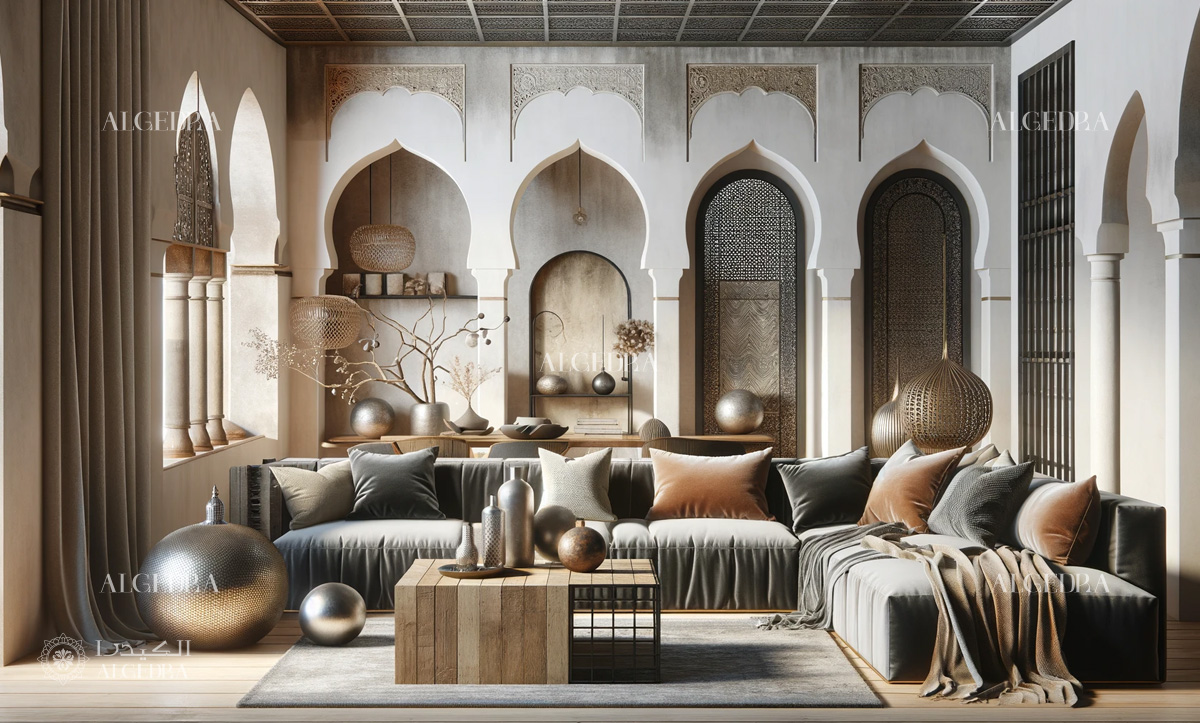
Whether you choose to incorporate subtle accents or create a full-fledged Arabesque-themed space, the elegance and history of this style are sure to enrich your living environment.